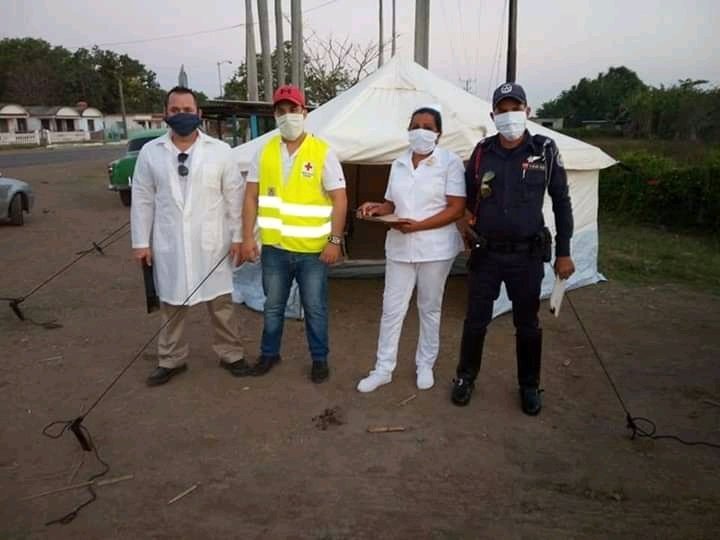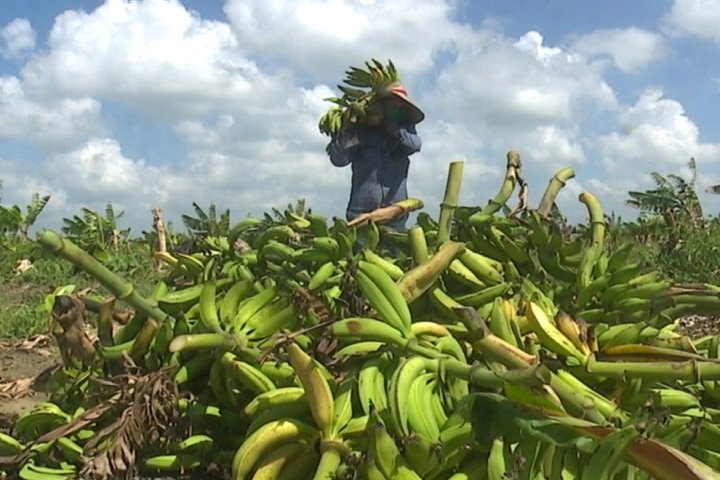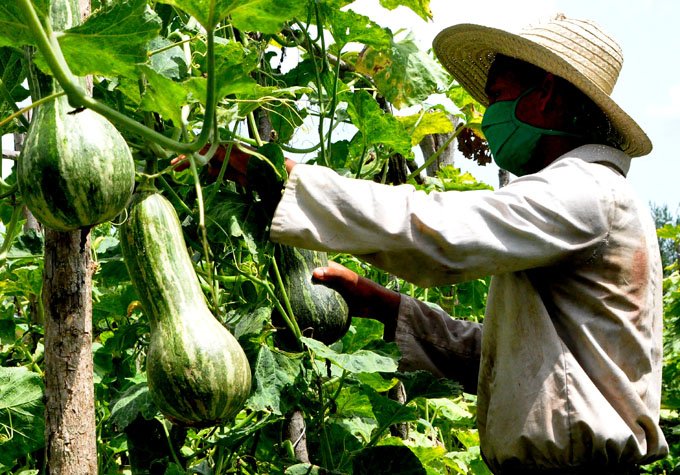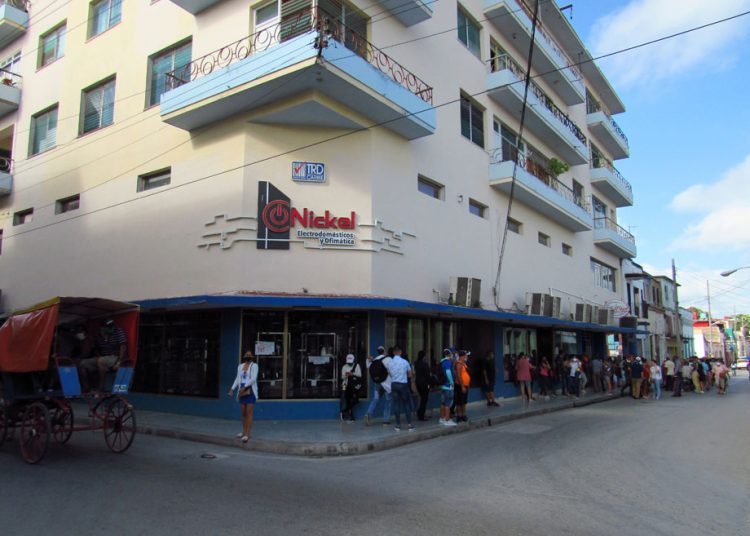On March 11, 2020, the first cases of the new coronavirus were reported in Cuba. From that moment on, the pandemic started spreading throughout the island and its provinces. Faced with a problem that had already shown its scope in the world, the Cuban authorities started taking measures at the national level, as part of a strategy favorably assessed by the Pan American and World Health Organization (PAHO/WHO).
The closure of the borders, the mandatory use of the mask and the prohibition of interprovincial travel are three central variables in the epidemiological management of the Cuban strategy to deal with the pandemic.
Measures like these were complemented by others at a territorial level, aimed at contextualizing the general threat presented by COVID-19 in the specific conditions of the provinces and municipalities. That is, to organize life in its daily rhythm, crossed by two axes.
The first are those structural problems of Cuban society such as inequality and scarcity, exacerbated by the pandemic, which raised certain daily difficulties to the category of public health risk, such as lines to purchase basic need products. The second is the particular characteristics of the territories, the evolution of COVID-19 in them and the authorities’ actions in the face of the situation.
As a whole, these two axes build shared realities for the entire Cuban population and also differences between provinces and even municipalities. Thus, for example, in some places the purchase in stores of the CUC marketing network is controlled through the ration book, while in others the matter is left as usual.
A little over five months after the first case, while some provinces take action against the rebound they are experiencing in controlling the pandemic, others continue their return to the “new normal.” With this series, OnCuba approaches the different realities of the Cuban provinces, starting with three that don’t report cases by now: Cienfuegos, Holguín and Granma.
Cienfuegos: restricted access
The province of Cienfuegos has a total of 24 COVID-19 positive cases, of which 23 recovered and 1 died. It entered post-COVID-19 recovery phase 3 on July 20, which would imply that “the streets gradually resume their normality,” as the local press reported on that day. It also warned about the need to maintain the perception of risk.
On August 11, the Provincial Defense Council decided to strengthen the health measures related to the prevention of COVID-19, “in keeping with the current epidemiological situation, complicated in recent days with the increase in confirmed cases in Havana, Artemisa and Villa Clara.”
Given this, nine screening points were reactivated on the main access roads to the province, as stated by Dr. Arelys Crespo García, head of the Surveillance Department, to the newspaper Cinco de Septiembre. The official clarified that the measure “does not mean that entry is prohibited, but it does make it possible to detect any alarm symptoms in time.”
On June 7, when the national press reflected the good management of the province, which on that date accumulated 40 days without positive cases, it reiterated the role of those screening points. “Activa continues surveillance at the borders with neighboring territories, where several screening points are set up, in order to prevent the arrival of COVID-19 patients in Cienfuegos. Vital signs, temperature are taken in these points, and the reason for traveling and address where they are staying are recorded to identify possible suspects in case of new outbreaks. In addition to fumigating vehicles.”
OnCuba was able to verify that in one of those screening points, the one located in Marta Abreu, on June 1, a Cienfuegos address on the identity card was required or a justified a case of force majeure to enter the province.

While the province reinforces its borders in view of the rebounds in others, the people recovered from COVID-19 continue to be a source of attention for the Héroes de Playa Girón Specialized Outpatient Center (CEA), located in the provincial capital. Center specialists told Juventud Rebelde about their work to analyze possible physical and mental consequences of the disease. Dr. Julio Héctor Jovas Dueñas, specialist in Internal Medicine, stated that “the analysis and clinical examination showed high levels of liver enzymes as sequelae, as occurs with some arboviruses, neuromuscular damage and myopathy.” He also argued that among the symptoms patients referred to the medical team are kidney, digestive and other anomalies “that could be a result of the passage of SARS-CoV-2 or derived from their lifestyle,” which they aim to determine.
The last positive case in Cienfuegos was registered on August 15. This is a male resident in the main municipality, but his source of infection is located abroad. On that date, 217 contacts were kept under surveillance.
The contacts of a possible positive case are precisely the greatest concern for Lidia, a resident of Palmira, a municipality that to date has not had any case of COVID-19, but which is less than 15 kilometers from the provincial capital. Due to this closeness, Lidia continues in isolation until today, as she tells us, because if the coronavirus enters her house “it leaves her without a family.”
Lidia lives in isolation, as far as possible, with her three-year-old daughter, her 57-year-old mother with rheumatoid arthritis and her 61-year-old father with hypertension. Since the pandemic began, she is in charge of buying all the products in the house, that is, of standing in lines. For her, it was “a blessing” when the province started controlling the sale of products in the marketing network in CUC through the ration book. She says that if it weren’t for that she “couldn’t buy anything without having to start a fight” because those lines were taken over by “the same people.” Lists were made since days before, people sneaked in with the firsts in line….
However, the measure did not fully meet her needs. Lidia explains that, according to her ration book, she has to buy in a certain store and, if the product she needs is in another, she will run out of it until it gets to her store. Luckily, she’s been able to get the chicken for her daughter, because “it comes in every week, although not so many packages.” Oil is something else: “I spent three months without oil, because until all the ration books got it, I couldn’t buy again.”
Something similar happened to her with the toiletries: “The 700 ration books that buy in my store have not been able to get shampoo or toothpaste in five months, they brought some only once and very little.” Lidia has been told that in Cienfuegos, the provincial capital, more things are sold.
However, toothpaste and shampoo are also the most “hard-to-get” products, according to Carla, who lives in Cienfuegos. She tells us that there, since the beginning of August, they decided to remove control of the purchase by the ration book. “It didn’t solve much either, because you had to stand in long lines, and you weren’t sure you would buy because it could run out and you are left for the next round,” she clarifies. She adds that now your ID card is collected at the door of the store and you are put on a list, “so you don’t buy again.”
Carla is not willing to spend dawn on a line, so she buys what she gets “under the counter,” although her work as a tourist guide was also interrupted and, with it, her income. In sales groups on Facebook, the previous week they promoted the sale of Sedal shampoo and conditioner at 12 CUC, the same day they were sold in the store.
What she doesn’t get by that means, Carla doesn’t have: “For example, I imagine I’m a vegetarian and I don’t eat chicken.” When the only alternative is the line, she leaves it to Ana, her mother. One day last week Ana was in a so-called shampoo line from nine in the morning until six in the afternoon. “Supposedly,” she clarifies, “because sometimes people stand in line because someone from the store tells them that they are going to sell a product or they imagine that it’s about time, taking account the distribution time of the products in Cienfuegos.” Sometimes they’re right, sometimes they aren’t.
Holguín: three months without COVID-19
After more than 90 days without autochthonous cases, the perception of risk has been deteriorating among the people of Holguín or they’re so tormented in the transition to the “new normal” that they don’t notice it.
This is shown by the testimonies collected by the local weekly, where this week it mentioned the case of people who, both in one of the many lines to get food and when getting on a local bus, don’t use the mask. Out of compassion, sometimes someone else reaches out to offer them a mask on loan and as safe-conduct.
This “fraternal” response seems to emerge in the multiple lines because, yes, certain food items “disappeared” along with the positive autochthonous cases, as Ricardo, a state worker ironically tells us. For him, “there are no basic products in the stores. They bring out a little of hygiene products, chicken, oil, but on alternate days; there are very few products and to get them you must make huge lines. I have heard of people who have spent two, three days, a week and up to 21 days in line,” he says.
Months ago, his grandparents’ neighborhood was quarantined and, since then, the torturous searches for food began by bicycle for this 39-year-old man. “Technically the government had secured food for the area closed by quarantine. They prepared some modules with products. The prices were really not low, for example, a pancake, toasted cornmeal, a liter of syrup, crackers and Cuban pasta, 46 pesos. A lot of flour for some old people,” he says.
Bypassing the provisions for the new coronavirus, and although with the necessary precautions, he has had no choice but to wander without much luck in search of food from one point to another. However, “even if there is nothing, the lines are endless. For me, this has gotten on people’s nerves,” he warns.
Others agree with him that finding products such as chicken or toilet paper has become a real problem in the city, and they don’t want to imagine what it’s like in some municipalities.
But there are two more complications: the lines that continue, although organized by anti-line groups and the police, and the illegal resale that proliferates even in the middle of the street, thanks to the famous carts that enter the neighborhoods loaded with merchandise. The prices of what they offer are multiplied by three.
“When it showed up again, pork prices soared. The same happened with fruits and plantain. Papaya is six pesos a pound; a plantain five or six pesos,” says Ricardo.

Like Cienfuegos, Holguín keeps its borders under strict control. The main routes to access the territory have points such as that of Los Jagüeyes, at the entrance to the Calixto García municipality, where travelers coming from any other central or western territory are screened.
Until Saturday, the Provincial Health Department had registered in the province about 728 national travelers, most of them coming from Havana (547). For that reason, they keep a follow-up from the primary health care system, anticipating the return of contagions, when until August 20 there were only two positive patients hospitalized the territory: a traveler from Costa Rica and one from Moa who arrived from Artemisa.
By September, the territory should have a Molecular Biology Laboratory, under construction at the Vladimir Ilich Lenin Provincial Hospital. This will allow it to continuously check daily tests.
Granma: in the gaps of the production chain
The first patients with the new coronavirus were documented in the province of Granma between March 9 and 22, 2020. Patient zero was a French citizen who was staying at the Royalton Hotel, in front of Parque Céspedes, in Bayamo, but shortly after Cuban citizens from Italy, Spain, Panama, the United States and Canada were added, both residents on the island and visitors.
At the end of March, 10 cases were reported in the province: five in Bayamo, two in Guisa, one in Jiguaní, one in Manzanillo and one in Río Cauto. On April 19, during a meeting of the Provincial Defense Council held in Bayamo, Granma also decided to close the borders with its neighboring provinces―Las Tunas, Holguín and Santiago de Cuba―due to the increase in cases in those territories. By then, the province accumulated 20 days free of the disease. Bayamo, in a word, was in quarantine.
Regardless of its possible problems, the truth is that this policy worked. Dr. Kenia González Medina, head of Medical Care of the Provincial Public Health Department, told the local press that the 12 cases registered in the territory had been discharged from the hospital on May 5.
But that efficiency in the control of the epidemiological situation contrasted with the problems of material life, especially those related to the availability of food and agricultural products, an old matter, magnified by the economic impacts of the pandemic. To cite just three examples, a swift review of official statistics shows that from 2013 to 2018, the production of pork, poultry and eggs had been decreasing significantly in the province.

Regarding other agricultural products, in mid-2015 the newspaper La Demajagua said that “the failure of state enterprises in production, beyond any explanation or justification,” was “the cause of the shortage of agricultural products in the markets.” Manuel Sobrino Martínez, president of the Provincial Assembly of People’s Power, declared: “Organizational, supply and discipline conditions must be created that allow us to be more efficient in the production and commercialization of these products.”
At that time, milk delivery to the population had a deficit of 700,000 liters. As part of the picture there was also a historical fact: the illegal slaughtering of cattle, typical of a locality that during its good times had been one of the main producers of meat and milk in all of Cuba.
Three years later, in 2018, the situation was not very different. “Granma will be a more prosperous province if it develops agriculture,” said Federico Hernández, first secretary of the Party in Granma, speaking during the second ordinary session of the Provincial Assembly of People’s Power in Bayamo on May 28 of that year. According to the leader, agriculture was not “just to eat but to develop the province, improve the lives of those who work in it, stimulate the development of the industry in a sustainable way, with sustainable food, at reasonable prices, and produce to replace imports and to export.”
At the end of the day, this whole situation determined that with the pandemic, people went to stores in CUC, both those set up on General García Boulevard and on the Bayamo-Santiago de Cuba highway, to resolve “the protein,” that is to say, to buy the nylons of chicken pieces, the famous “hot dogs” and other deficit items, including soaps, detergents and personal hygiene products.
As for agricultural markets such as those in Plaza Luis Ramírez López or El Chapuzón, in a situation of a drop in supply, the usual occurred: sales prices skyrocketed, starting with those for pork. “The pound of pork sold by the state was 35 pesos per leg and 17 for the rest,” says a teacher from Bayamo. “Now the state doesn’t sell. On the street it was 25, and now 50 and 60, if you can find it.” “The price of the fongo [a type of plantain] has not changed, it’s just on the ration book and very low. The small markets now only have melons and avocados,” she added.
The lines to buy food, one of the most worrying problems due to the possibility of contagion due to the disrespect shown by Cubans for the regulations and social isolation, behaved in Bayamo as in the rest of the national territory.
As in Cienfuegos, in Bayamo the ration book mechanism was used for a time to seek more equitable access to basic need products. A young mother has summed it up as follows: “Everything was put in the ration book. The store manager kept the list of the books and they were marked as they dispatched what was bought. The line was organized by the number on the ration book. And everything was more controlled.”
But later, she said: “It’s no longer like that today. People mark on the line from the day before and then in the morning the police control and turns are distributed. And the police organizing and controlling the line so that they don’t mark twice. They sell until the product runs out.”
Thus, the “new normal” includes the old problems as well.










